As enterprises in manufacturing and healthcare evolve to become more digital, agile, and cost-efficient, the Human Resources (HR) function sits at the intersection of people and technology. Yet, HR teams are overwhelmed with time-consuming administrative tasks—screening resumes, conducting initial interviews, handling employee FAQs, and managing complex onboarding workflows.
Advanced AI models like GPT-4, when integrated with tools such as Huntflow, BambooHR, Docflow, and Navision, can drastically improve HR efficiency, reduce time-to-hire, and enhance employee satisfaction.
In this blog, we explore two high-impact use cases:
1. AI-Based Resume Screening & Initial Interview Automation

HR teams in mid-to-large enterprises receive hundreds of resumes every month. Screening them for role fit, scheduling interviews, and conducting initial calls takes hours—often leading to:
- Delayed time-to-hire
- Inconsistent evaluation criteria
- Poor candidate engagement
💡 The AI-Powered Solution
Use a GPT-powered talent assistant to screen, rank, and engage candidates autonomously.
End-to-End Workflow:
- Resume Parsing & Ranking:
- AI screens resumes using job-fit models trained on internal hiring history.
- Candidates are ranked based on role-relevance, skill match, and company benchmarks.
- Outreach & Scheduling:
- Top candidates are automatically contacted via email or voice bot.
- Screening calls are scheduled using Google Calendar or Calendly API.
- Automated HR Screening:
- A voice or chat assistant conducts the first round of HR questions (e.g., “Tell me about your last role”, “What are your salary expectations?”).
- Captures sentiment, key responses, and red flags.
- Summary Report:
- GPT summarizes the conversation and gives a fit score.
- HR receives a structured report on Slack or Asana.
✅ Business Benefits
- Reduces manual screening time by up to 70%
- Ensures consistent and bias-free shortlisting
- Speeds up early-stage hiring by 3–5 days
- Improves candidate experience with quicker feedback loops
🧰 Tech Stack
- GPT-4 + custom classifiers
- Twilio / Google Dialogflow voice bots
- Huntflow API + Google Calendar API
- Power Automate / Zapier / Make.com
- Slack, Asana, Google Sheets
🔗 Integration Points
- Fetch resumes via Huntflow
- Schedule via Google Calendar
- Push results to Slack, Asana, or HR dashboards
- AI-Based Virtual Employee Assistant
🛠 The Problem
Employee queries around payroll, benefits, onboarding, and training are often handled manually—leading to repetitive work for HR and frustration for employees.
In systems like Navision (payroll), BambooHR (HRIS), Docflow (documentation), and GetLearnWords (training), fragmented access causes:
- Delays in query resolution
- Missed onboarding tasks
- Training compliance gaps
💡 The AI-Powered Solution
Deploy an AI-powered Virtual HR Assistant that serves as a 24/7 concierge for employees across platforms.
What It Can Do:
- Employee FAQ Assistant:
- Answers common questions like “When is my next salary date?”, “How many leaves do I have left?”, “How do I update my bank details?” using data from Navision, BambooHR, and company policy docs.
- Smart Onboarding Guide:
- Guides new hires step-by-step—from filling forms in Docflow to setting up accounts and completing required tasks in Asana.
- Training Companion:
- Recommends learning modules from GetLearnWords.
- Tracks progress and nudges employees to complete mandatory training.
- Multi-Channel Access:
- Accessible on Slack, Google Chat, or web.
- Can operate via text or voice interface.
✅ Business Benefits
- Deflects up to 60–70% of repetitive HR tickets
- Ensures smooth onboarding for global teams
- Improves employee satisfaction and engagement
- Enhances training compliance and documentation accuracy
🧰 Tech Stack
- ChatGPT API / Azure OpenAI
- BambooHR, Docflow, Navision, GetLearnWords APIs
- Google Apps Script, Power Automate
- Slack, Google Chat, Asana
🔗 Integration Strategy
- Trigger onboarding flows from BambooHR → Asana
- Fetch pay slips, insurance details via secure Navision hooks
- Archive document submissions in Google Drive
- Track assistant performance via QlikSense or Google Data Studio
Real-World Example: AI in Action at a Healthcare Enterprise
A healthcare network operating across 15 countries implemented this AI-driven HR assistant. Within 3 months, they saw:
- 65% reduction in inbound HR support tickets
- 40% improvement in new hire onboarding compliance
- 3x increase in employee training course completion
Final Thoughts for CXOs
For HR departments under pressure to deliver more with less, Generative AI isn’t just a tool—it’s a strategic multiplier.
By automating low-value work and scaling personalized support across the enterprise, HR teams can refocus on building culture, strengthening talent pipelines, and driving business agility.
Ready to Empower Your HR with AI?
Start with high-impact, low-risk pilots—resume screening, onboarding assistants, or employee FAQs—and scale across departments with integrated AI workflows.
If you’d like to explore a mockup of the Slack-based Virtual HR Assistant or see a live QlikSense dashboard tracking HR assistant KPIs, feel free to reach out.




